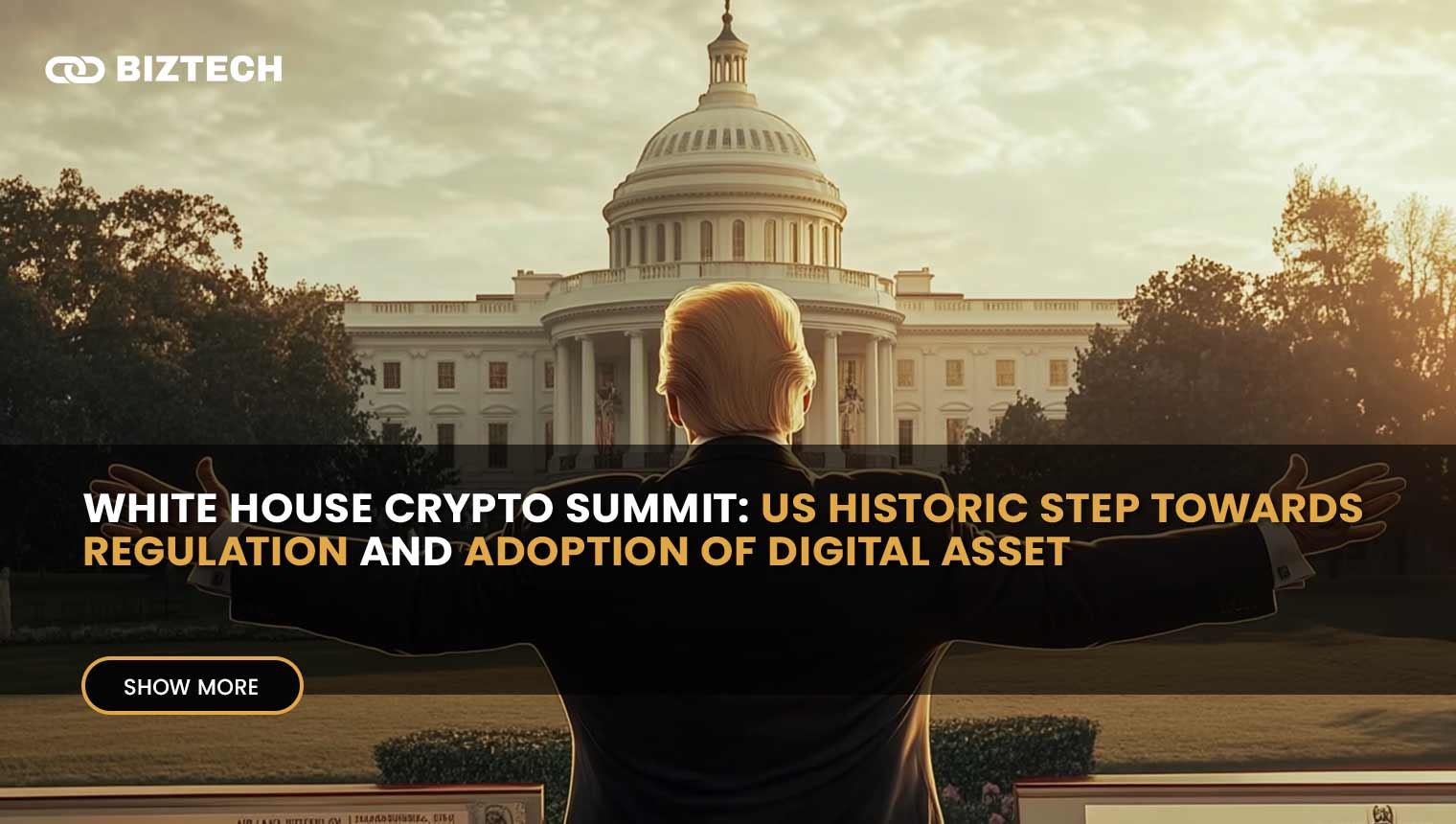Stay connected with BizTech Community—follow us on Instagram and Facebook for the latest news and reviews delivered straight to you.
On Friday, March 7, 2025, the White House will host the first Crypto Summit in the history of the United States, a highly anticipated event under the leadership of President Donald Trump. The summit is part of the Trump administration’s ambitious initiative to accelerate digital innovation and position the US as a global leader in the digital asset ecosystem.
By inviting industry leaders, prominent investors, and policymakers, the event is expected to be a turning point in developing a regulatory framework that supports the growth of cryptocurrencies while ensuring economic stability. Here is an in-depth review of what to expect from the summit, who will be attending, and how the event could change the digital asset landscape in the US.
Crypto Summit Participants: Who’s Attending?
The White House Crypto Summit will be the stage for a number of key figures in the crypto industry. Based on information gathered from various sources, including posts on the X platform and media reports such as Coingape, several participants have confirmed their attendance. One of the big names is JP Richardson, CEO of Exodus, a company known for its standalone crypto wallet that allows users to securely manage their digital assets without relying on third parties. Richardson’s presence suggests that the issue of self-custody is likely to be a major focus of the discussion.
Another equally important figure is Michael Saylor, MicroStrategy‘s Chief Executive Officer, who has become an icon in the crypto world thanks to his company’s aggressive strategy of accumulating Bitcoin. MicroStrategy’s massive investment in Bitcoin has inspired many other companies to consider digital assets as part of their financial strategy. Saylor’s participation is expected to bring a strong institutional perspective to the discussion, particularly regarding strategic Bitcoin reserves.
In addition, Matt Huang, co-founder of Paradigm, has also confirmed his attendance via a post on X. Paradigm is an investment firm focused on developing blockchain and decentralized finance (DeFi) projects. In his tweet, Huang expressed his enthusiasm for discussing how the US can lead the way in promoting open crypto principles and supporting ecosystems like Bitcoin. Huang’s presence indicates that the summit will not only focus on regulation, but also on the technological innovation underlying blockchain.
Information from X also mentions that invitations have been sent to leading crypto investors, CEOs of large companies, and members of the President’s Working Group on Digital Assets. David Sacks, who serves as the White House’s “AI & Crypto Czar,” will lead the event, while Bo Hines, the executive director of the working group, will manage the summit. Although the full list of participants has not been announced, speculation on X mentions the possible presence of representatives from large companies such as Coinbase or Ripple, given their influence in the industry.
The Summit’s Objectives: Regulation, Innovation, and Global Leadership
According to an official statement from the White House, the summit aims to formulate a clear regulatory framework for digital assets, while encouraging innovation and economic growth. The Trump administration has affirmed its commitment to creating a welcoming environment for the crypto industry, a drastic change from the hardline approach taken during the previous administration under President Joe Biden. One of the main focuses is on supporting self-custody, which gives users full control over their assets, as well as promoting the development of blockchain technology.
David Sacks, as summit leader, is expected to emphasize the importance of keeping digital asset innovation in the US, rather than letting it migrate to other countries. In a previous statement, Sacks mentioned that stablecoins could extend the international dominance of the US dollar, an idea that is likely to be discussed in depth. Meanwhile, Bo Hines will ensure that the discussion remains focused on formulating practical and implementable policy recommendations.
Posts on X also indicate interesting discourse that may arise at this summit. For example, user @academicryptoid reports that Mike Alfred of Alpine Fox LP mentioned the possibility of a tax exemption policy announcement for crypto asset trading. If true, this move could be a major catalyst for crypto adoption among individuals and institutions, while attracting more investment to the US market.
In addition, the summit will discuss the potential for national strategic reserves for digital assets, such as Bitcoin, Ethereum, XRP, Solana, and Cardano, as Trump announced in his recent social media post. This move indicates a shift towards active participation of the US government in the crypto economy, which could accelerate institutional adoption and provide further regulatory clarity.
Regulatory Changes: A Breath of Fresh Air for the Crypto Industry
This summit does not stand alone, but is part of a broader change in the US regulatory environment. Under the Trump administration, the Securities and Exchange Commission (SEC) has taken a softer stance than in the Biden era. Lawsuits against large companies such as Kraken, Coinbase, Uniswap, and Consensys have been dropped, signaling a shift from a strict enforcement approach to more structured engagement with the industry.
This change is in line with Trump’s vision of making the US the “crypto capital of the world.” By removing regulatory barriers that have been seen as slowing innovation, the administration hopes to attract more talent, capital, and blockchain projects to the US. The White House Crypto Summit is the platform to crystallize this vision into concrete policy.
Potential Impact and Expectations from the Summit
This summit has the potential to be a historic moment for the crypto industry in the US. If it succeeds in developing a clear and supportive regulatory framework, the event could boost investor confidence, encourage mass adoption, and strengthen the US position in the global competition in the field of digital finance. Discussions about stablecoins, for example, could pave the way for closer integration between digital assets and the traditional financial system, while strategic Bitcoin reserves could change the world’s perception of crypto as a national asset.
However, challenges remain. Uncertainty around policy implementation, potential resistance from legacy regulators, and crypto market volatility could affect the outcome of the summit. Even so, sentiment on X is largely positive, with many users such as @kriptokurdu_eng highlighting the enthusiasm of the crypto community for the event.
Conclusion: Steps Towards a Digital Future
The White House Crypto Summit on March 7, 2025, marks an important milestone in the regulation and adoption of digital assets in the United States. With the presence of influential figures such as Michael Saylor, JP Richardson, and Matt Huang, as well as the leadership of David Sacks and Bo Hines, the event has the potential to reshape the US perspective on cryptocurrency. From the drafting of clear regulations to the exploration of strategic reserves, the outcome of this summit can bring significant changes that will not only benefit the crypto industry, but also the US economy as a whole.
As the first event of its kind, this summit is proof of the Trump administration’s commitment to embracing the digital future. The world will be watching closely, as the decisions made at the White House this week could serve as a blueprint for digital asset policies around the world.






